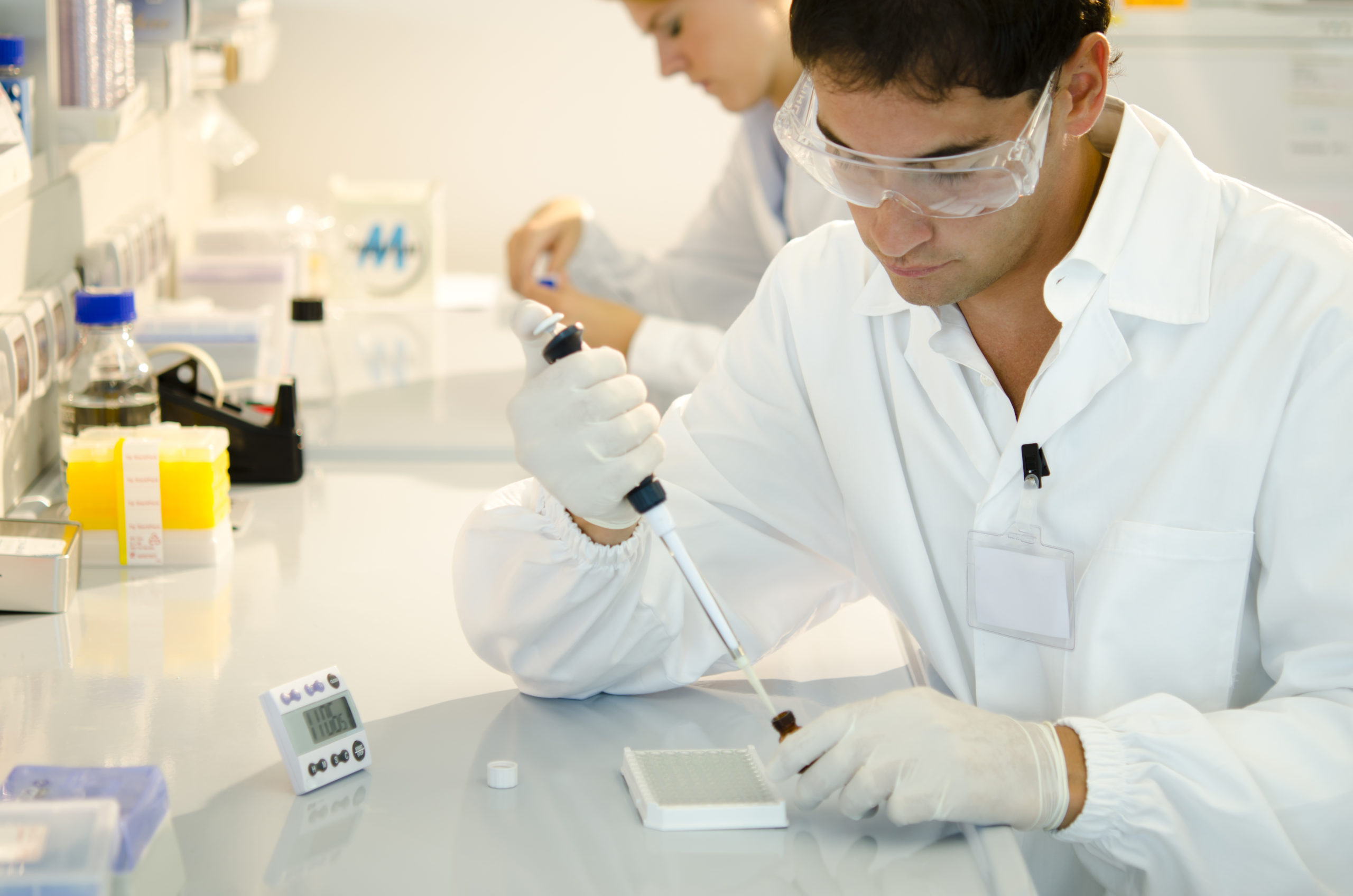What is the CRISPR/Cas9 System?
CRISPR (clustered, regularly interspaced, short palindromic repeats) is a defense mechanism originally discovered in bacteria that works to degrade invasive viral DNA and other exogenous DNA. The CRISPR/Cas9 system from Streptococcus pyogenes is currently the most commonly used one.
What is the biochemical mechanism of the CRISPR/Cas9 System?
The Cas9 protein first binds to the CRISPR RNA (crRNA) and TRACER RNA (tracrRNA) to form a complex, which then binds to the target sequence to form the RNA-DNA complex. The complex ultimately makes double strand breaks in the DNA. crRNA recognizes target DNA sequences and tracrRNA is a conserved essential component for Cas9 activity.
In order to simplify gene-editing procedures in the laboratory, crRNA and tracrRNA are fused together to make Single Guide RNAs (sgRNAs). The target gene can be edited by transfecting cells with a plasmid that expresses both the sgRNA and the Cas9 protein. The CRISPR/Cas9 technology has been successfully used in bacteria, yeast, plants, fish and mammals, and is the most efficient genome-editing technique.
Why should I choose CRISPR/EGE™ platform? (CRISPR/EGE™ vs standard CRISPR/Cas9)
Recently gene editing services have shifted focus onto CRISPR/Cas9 based gene editing, as it is becoming the gold standard among most commercial gene targeting services due to its efficiency and versatility. You might have read that the homologous recombination efficiency between exogenous DNA and its target genome is typically very low using the standard CRISPR/ Cas9 service technology. This is true. However:
Biocytogen has developed the innovative Extreme Genome Editing — or EGE™ — system, which is based on the CRISPR/Cas9 gene targeting platform. With its site-specific gene editing, EGE™ is up to 20-fold more efficient at knocking in large DNA fragments compared to CRISPR/Cas9 alone and is ideal for generating various types of genetically engineered mouse/rat and cell models. As a result, EGE™ minimizes the timeline to generate gene-edited animal models and is successful in 98% of Biocytogen’s gene-editing service projects.
Examples of genetically engineered models you could create with EGE™ include, but are not limited to: conventional knockout/knockin conditional knockout/knockin, safe harbor loci knockin, humanization, etc.
Should I choose CRISPR/EGE™ or ESC/HR?
At Biocytogen, 85% mouse and 100% rat gene editing projects are generated via EGE™ technology. Although EGE™ technology is comparatively cheaper and offers faster turnaround times compared to ESC-based projects, projects where the knockin size is greater than 18kb still necessitate the use of ESC/HR technology.
Advantages of Biocytogen’s CRISPR/Cas9-based EGE™ Technology:
| High Speed | The F0 generation positive mouse can be obtained in two months at the earliest, while the F1 generation can be obtained in five months |
| Zero Risk | Supported by a strong production platform, customers will be fully refunded if the project fails |
| High Efficiency | Compared with standard CRISPR/Cas9 technology, the efficiency of homologous recombination mediated by the EGE™ system is increased by 10-20 fold |
| High Quality | Southern blot screening minimizes follow-up experimental risks caused by random insertions |
| Diversification | Conventional knockout, conditional knockout, and gene knockin, etc. |
| No Species Limitation | Cell line, mouse, rat, pig, monkey, and zebra fish, etc. |
Biocytogen CRISPR/Cas9-based EGE System Service Flow:
Our Projects Always Maintain Strict Quality Control
At Biocytogen, we put great emphasis and focus on Quality Control (QC), as our experts know that can make the biggest difference between a successful project or not. Learn more about our strict QC here.
Southern blot to screen out random insertions
Statistical analysis shows that random insertions (from the targeting vector) occur in 32% of CRISPR/Cas9-based EGE™ projects. Of these animal models containing insertions, 14% cannot be removed even by breeding, even with the most carefully designed CRISPR services. Southern blot analysis is the gold standard to test for random insertions. Biocytogen recommends Southern blot analysis to ensure that there are no random insertions in our gene edited animal models.

Request a Quote
Contact us today to find out how we can help advance your research with custom generated rat, mouse or cell line models.



